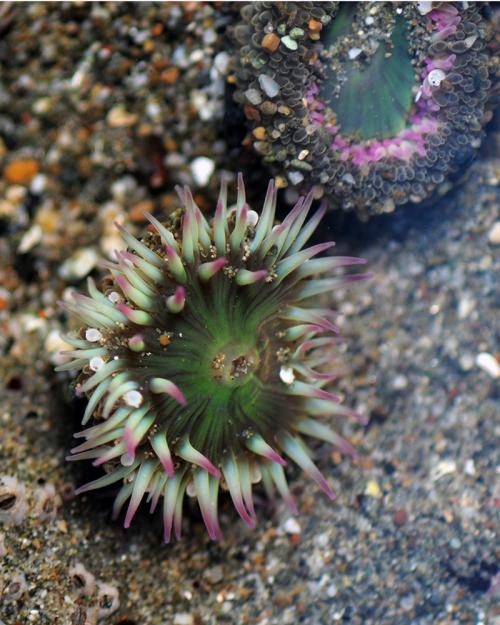
Geographical and environmental impacts on symbiotic relationships between anemone and algae
Corals and anemones form a symbiotic partnership with photosynthetic algae based on an exchange of nutrients: the host receives sugar from the algae, the algae receives nutrients and consistent exposure to sunlight from the host. This relationship can break down under stressful conditions, a phenomenon known as 'bleaching,' which, in the case of tropical corals, can quickly lead to the death of the host. Bleaching resistance can arise if a local population consistently encounters and adapts to warmer conditions. However, consistency is key, as beneficial adaptations in a parent that are passed down to its offspring will only continue to be beneficial if that offspring lives in a similar environment. Although they form a partnership, each partner has an independent life cycle, with different rates of reproduction and migration. This means that one partner might migrate short distances each generation where offspring experience the same environment as their parents, while for the other partner the opposite might be true.

This study aimed to describe how well populations of hosts and their symbionts might be able to match their environment in a group of temperate anemones (Anthopleura spp.) and their symbiont partners (Breviolum muscatinei) that live on the Pacific coast of North America. These anemones and algae experience a wide range of environmental variation across large and small spatial scales. For example, anemones in Alaska will, on average, experience cooler water temperatures than those in southern California. However, organisms living in the intertidal zone can experience similar temperature extremes across short distances. An anemone could be exposed to warm aerial temperatures during a low tide if they live high in the intertidal zone, while another individual living a few meters deeper will remain completely under water.
This study examined population genetic patterns across the geographic ranges (Oregon to Baja California, Mexico) of these anemones as well as across the intertidal zone (spanning < 10 meters in depth). Genetic patterns in the symbionts suggest that they are able to match environmental variation that differs between geographic locations, as well as across the intertidal zone. Similar patterns were largely absent in the hosts. These results suggest that in Anthopleura spp., symbionts are more likely than their host partners to be able to adapt to conditions specific to a particular geographic location, as well as to conditions specific to their depth in the intertidal zone, and that symbiont populations are more likely to be able to match changing conditions as water temperatures warm due to climate change.
Read the publication in the Proceedings of the Royal Society B here
